
Charles Baudelaire and Rococo in the 21st Century
04/11/2013
Pier Vittorio Aureli (1973) is an architect and architectural theoretician who tightly weaves together the threads of architectural form, political theory and urban history in his studies and writings. He lectures at the architectural genius-producing institution – otherwise known as the Architecture Association's School of Architecture in London – and is also a guest professor at Yale. Other schools where Aureli has taught include Columbia University in New York and his own alma mater – the Berlage Institute in the Netherlands.
The Italian architect has written essays for journals such as Log, San Rocco, and OASE, and has written two books: “The Project of Autonomy: Politics and Architecture Within and Against Capitalism”, Princeton Architectural Press, 2008, and “The Possibility of an Absolute Architecture”, MIT Press, 2011. He is currently studying the relationship between labor and architecture, and a part of his research has just been published in the book “Less is Enough”, Strelka Press, 2013. In it, Aureli reveals that the modernist mantra of “less is more” has been shoved aside as an aesthetic principle of minimalism, and has been transmuted into the capitalistic cry of “make more with less”. One must agree with American architect Peter Eisenman, who also has an affinity for the theoretic, when he says that Aureli's writing seems, at first, to be about architectural history, when in actuality, it radically casts doubt on what has been accepted as the norm in today's architectural theory. The Italian architect's books are required reading for anyone who is interested in architecture and its future.
Aureli's own take on the future can be gleaned from the below interview, which was recorded in Tallinn during the Architecture Biennale. At the Biennale, he gave a lecture at the symposium, and also expounded on his interpretation of soviet-era modernism as seen in the Biennale's main exhibition. Oh, and by the way – he also co-founded the architectural offices of Dogma, together with Martino Tattara. In 2005 Dogma won the account for designing the new administrative capital for the Republic of Korea. Aureli is interested in large-scale projects, although he is well aware that city planning is not just a benign way to increase the well-being of society – as it is usually publicly presented – but also, a very politicized sphere of activity.
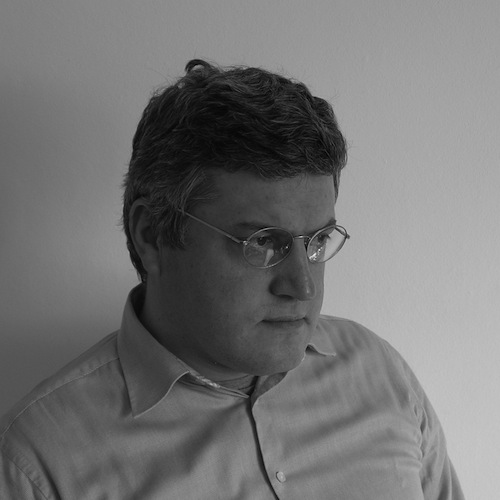
Photo from Pier Vittorio Aureli's personal archive
How do you look at soviet modernism in the context of the whole movement?
Russian architecture is the most extreme form of modernism, from Malevich's Black Square, to the constructivists. It had a huge impact on Western Europe, as well as on capitalism overall and the understanding of the welfare state. One of the most essential books of the 20th century, “Political Theology”, which was written by the influential German lawyer Carl Schmidt, begins with the sentence: “We are all in the shadow of Russia”. What was happening in Russia was something so radical that it left an impression that covered a wide circle around the epicenter of the events.
But all of this applies to modernism before WWII...
Yes, but also after the war; for instance, in France and Italy, the communistic parties were very powerful and had great influence. There's a clear breaking point in the West's attitude towards the Soviet Union. That was the year 1956, when Khrushchev commended Stalin's actions – it was then clear that the Bolshevik ideology had veered off of the track a long time ago. The last illusions of Russia as a progressive country were dashed when the Soviet Union invaded Hungary. The 1960s – 70s are a completely different time – before then, the East was a source of inspiration and a model for the West, but afterwards, everything turned on its head. The turning point was the so-called “kitchen debates” – Khrushchev's and Nixon's discussions at the American kitchen show in Moscow.
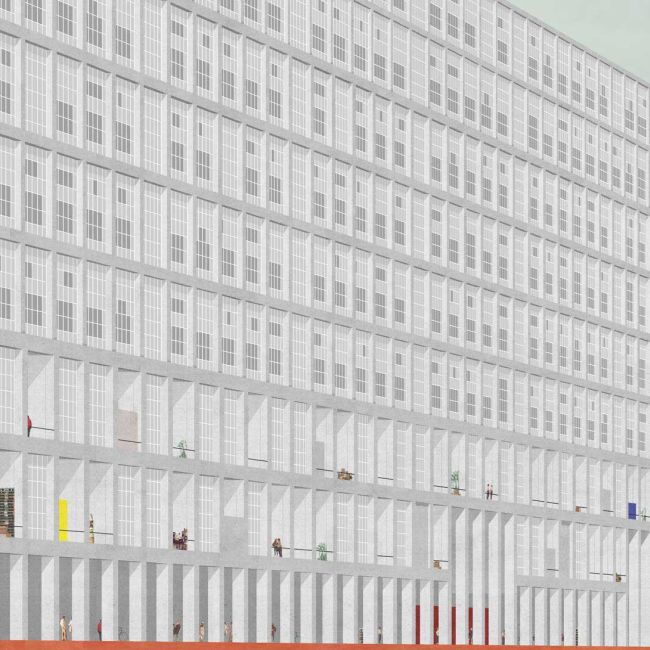
Live Forever: The Return of the Factory. Proposal for a living/working unité d’habitation for 1600 inhabitants at the Balti Station area, Tallinn, 2013
Something that is often cited in Latvia is the 1955 law set by the USSR Communist Party's Central Committee and the USSR Council of Ministers – “On avoiding excess in architectural planning and construction”, which allowed architects to return to modernist forms of expression.
Yes, that was important. But I believe that the long-term effect of this law was the annihilation of soviet modernism – of its distinctiveness in relation to the West. A continuation of prewar modernism didn't happen. The projects of the 1960s and 70s are in no way relevant in the evolution of city planing. To me, Stalin's era – with all of its pomp and apparent anti-modernism – seems clearer and much more relevant. I know that Russian scholars don't agree with me, but I stand by my opinion. In Moscow, the difference between what was built under Stalin, and what under Khrushchev, is immediately obvious. Stalin's architecture still keeps the city together as a unified whole, whereas the ideas from Khrushchev's time create an explosion of cities – they are spread out, without borders. In addition, the concept of beauty was destroyed during that time, which is something that did have a place under Stalin – as an idea of celebrating life and the city.
And what of soviet-era architecture today?
The fashion and wish for large apartments has passed. Once again, people want small flats and they value the ideas of collectivism. Especially in this period of economic crisis, going back to soviet-era architecture seems like a sustainable solution. Soviet-era buildings are more relevant than the over-designed buildings of today, which are tied to a very specific fashion, or fancy. Socialistic architecture has anonymity – an abstraction that goes beyond time and fashion, and which is easier to adapt to diverse needs.
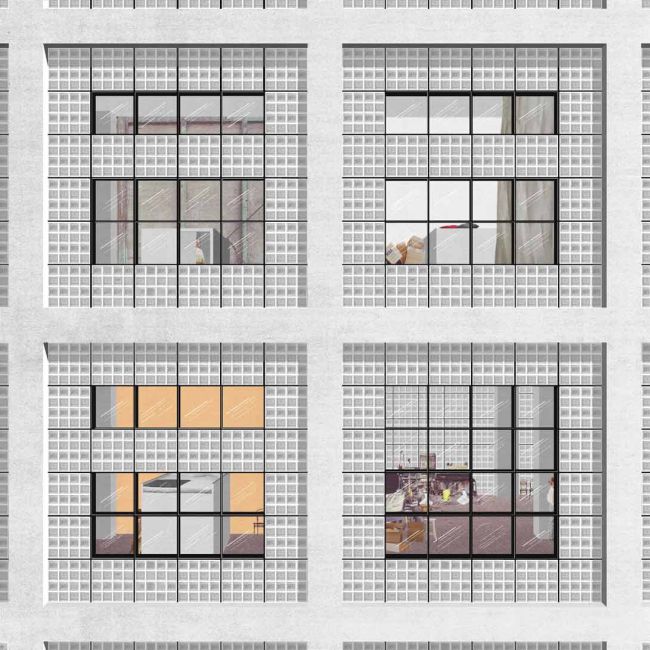
Live Forever: The Return of the Factory. Proposal for a living/working unité d’habitation for 1600 inhabitants at the Balti Station area, Tallinn, 2013
In one of your lectures, you likened today's situation to that of the rococo era...
Yes, the rococo was a time of transition between the baroque and classicism. It was a period in which everybody waited for something to happen. And eventually, it did – the French Revolution happened. It was a time of lost illusions, characterized by great apprehension of what the future held. A situation like this was expressed in the arts as an overabundance of form and line – a self-indulgent form of entertainment. We are, I believe, in a very similar situation, and our architecture is also similar. Especially 10-15 years ago, when an insanity of form ruled, without any sort of thought being put into it. It seems as if architecture has been taken over by a self-indulgent engineering that makes the structure of all of these expensive buildings possible.
You often use historic references...
I believe that the best way to understand today is to know history. One must understand what has been, in order to understand what is happening right now and how it can be altered. In my opinion, history is too important to be left to professional historians. Today, discussing history is more relevant than talking about even the 21st century. To understand the problems of modern-day architecture, one must read [Leon Battista] Alberti, and not because he was especially erudite, but because he discovered many 15th century problems that we are also facing in the 21st century. They are writings that resonate with today. I don't make references because I like history in itself. History, in itself, is not better or more interesting than other fields, but it is the only way to understand today. I don't think that the present can be understood by thinking of the future. Our present is rooted in the past.

Venus. Proposal for 800 social housing units at Vieusseux-Villars-Franchises, Genève, 2013
Nobody wants to talk about the future now...
And neither do I. This is a mindset that is characteristic of the new millennium. For the whole of the 20th century, we were confident that we could foresee the future. We hoped for something great, but all of our aspirations fell flat. I really like The Sex Pistol's slogan – “No Future”. It expresses today's zeitgeist and indicates that thinking about the future is foolish. In my opinion, the only thing we can do for the good of tomorrow is think about the past. Right now, all of the scenarios about the future are commercial activities. All of these plans for 2050, and so forth... They don't interest me. The whole of philosophy on sustainability is based upon thinking about future generations. These sorts of arguments don't convince me. I don't think that we have to decide today's actions by thinking about what is going to happen in the future. This is an ethically flawed mindset.
You prefer going against the flow...
I don't like the word “rebel”. In all times, rebels have been successful entrepreneurs. I believe that it is important to be critical. That means to always question things, not harbor a rebellious attitude. Yes, I am critical. When working in art or architecture, you must decide if you want to be successful, or if you want to find your own place. To be successful, the whole world must like you, but in searching for – and finding – your own stance, you can expect some support, but not the accolades of the whole planet. I have chosen the second road because, in my opinion, it's not interesting to work in architecture within the framework of the former.
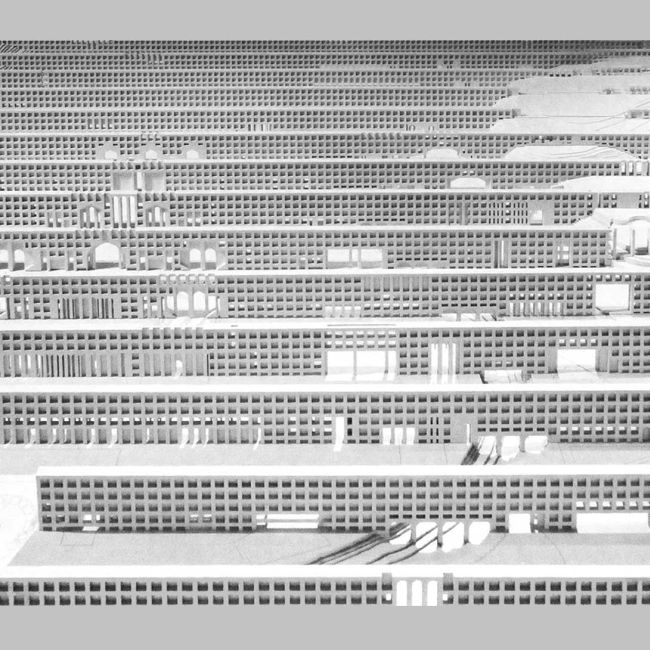
A field of walls, 2012
Your books could seem to be contradictory in terms of one another, but they also do supplement one another.
Definitely. I believe that everything that you write is a life-long project that can change and develop in various directions, but it retains a thread of continuation. It's very nice to hear that you perceive my books in this way. Once a book is published, I don't think about it anymore. It is important to be free and independent of what you have done previously; to not be trapped by your own preconceptions of yourself. I am not an architectural critic, even though I do write a great deal. I ponder what I am – a writer or an architect; if what I write is commentary or critique. I can't – and don't even want to – answer these questions; however, I am convinced that if you are an architect and you don't write, you loose something that is very essential to being a good architect. Writing is an essential way to find and formulate your thought and idea, and an architect without a thought nor an idea isn't worth much.
In Latvia, there's a pointed request for objective critiques that unwaveringly state what is good architecture, and what is bad architecture...
I'm always doubtful if someone tries to label something as objective, or if one attempts to reach such a position. Those are flawed hopes that will never materialize. Critique, in principle, cannot be objective. Attempts at becoming such can end up with reviews that become the equivalent of travel advisories. The more you expect an objective judgment, the greater the possibility that you will be met with intellectual fraud. I would rather trust very subjective – but truthful and open – critique, rather than one that doesn't reveal the author's true thoughts.
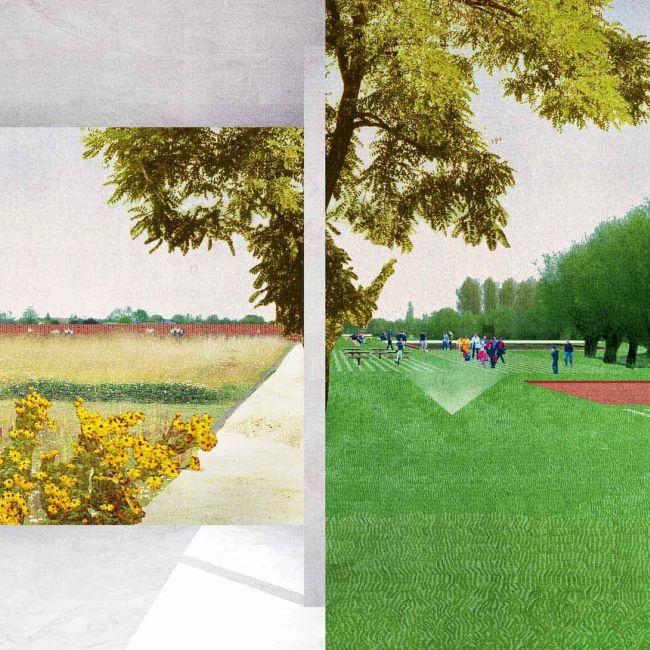
Citizens. Proposal for an urban park in the town of Puurs, Belgium, 2012
Art- and architectural critique emerged in the 19th century. The poet Charles Baudelaire was the first to employ such a genre. When going to salon exhibitions, he noticed that attention was given only to one kind of art, and that only one kind of art was seen as respectable. He wanted to highlight works that received less respect, but that were just as relevant – and more interesting than the officially recognized favorites. Baudelaire introduced a genre of writing that defended art that was otherwise undefended. It is important to note that he himself was not associated with any art institutions. A critic is independent, with his own individual position. Critique is powerful if it is free, independent, and represented individually. But this is also the weak point of this field, because there is a good chance that no one will reimburse you for your work. A critic must definitely be free, but there are so many side effects to freedom that this freedom can make it impossible. Today, the price for freedom in architectural critique is very high, and there are few who want to live like Baudelaire did in his day – without suitable work and earnings.
Another aspect important to critique is the constant asking of questions, and skepticism. The work of a critic is not as easy as it seems from the side-lines. These days, it is mostly an expensive hobby. The media are hesitant in publishing articles that don't bring them immediate commercial earnings. If you wish to write for them, one of their conditions is that every reader must be able to understand the text. One can understand where the publishers are coming from, but there's a big risk of making everything banal when working like this.
Are architectural critics still respected today?
I don't like the widely-accepted Ada Louise Huxtable and Herbert Muschamp. I don't believe that they were exceptional writers. They're writings seem boring to me. In my opinion, the last notable architecture critic was Peter Reyner Banham. I don't agree with everything he wrote, but he was good also because he was an architecture historian with a deep understanding of history. A substantial knowledge of history was at the base of all of his writings.